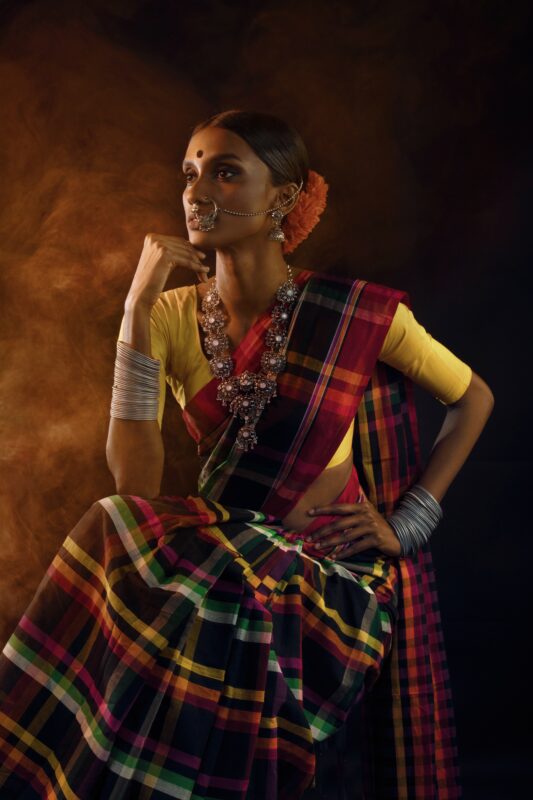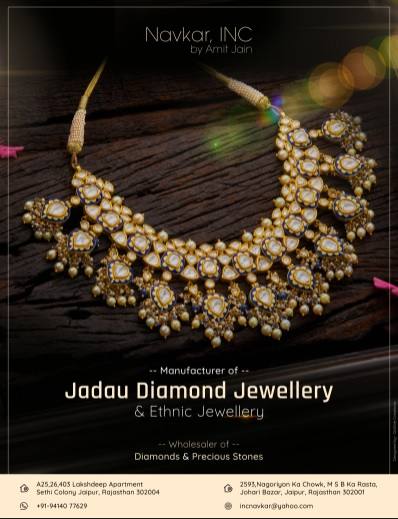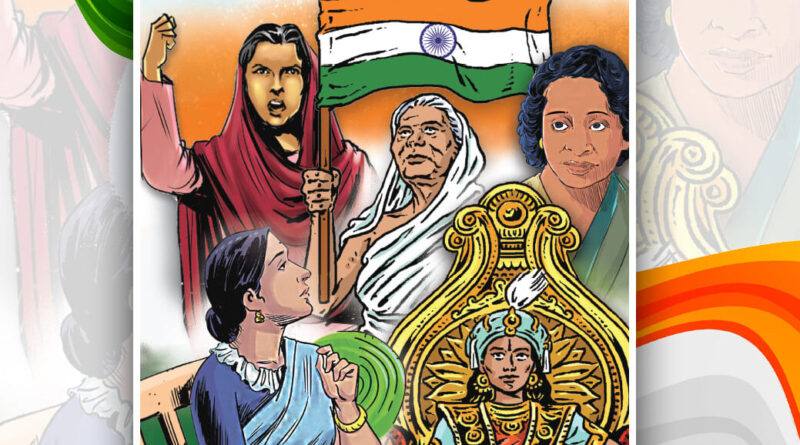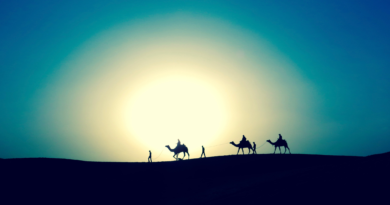SHEROES OF INDIA
………..and the importance of the FEMALE HERO moment
There is always a HE in a SHE but not vice versa. Since time immemorial they have been the pillar of strength for many heroes in the history of mankind. The irony is that we perpetually fail to acknowledge their contributions. It is high time we do the due diligence. There are numerous Women Heroes (SHEROES) of India. The world has not known much about their lives and struggle, courage and determination, wisdom and valour. The current generation will be inspired and influenced by these unparalleled lives of these SHEROES and make India Diaspora proud. I list a few of such names below, 26 unknown SHEROES to be precise.
- Gandhari The lonely Queen
- Draupadi A role model for modern women
- Sita The Silent Pillar of Strength in Ramayana
- Yashodhara, The Invincible Spiritual Seeker
- Rudrama Devi: (12th Century) Monarch Ruler of Kakatiya Dynasty
- Rani Durgavati (1524 – 1564) Queen of Gondwana
- Rani Abbakka Chowta (1525 – 1570s) Tuluva Queen
- Chand Bibi (1550 – 1599) Warrior Monarch of Bijapur
- Jijabai Shahaji Bhosale (1598 – 1674) Shivaji Maharaj’s inspiration & Swaraj visionary
- Tarabai (1675 – 1761) Regent of Maratha Empire
- Ahilyabai Holkar (1725 – 1795) Queen of Malwa / Indore
- Velu Nachiyar (1730 – 1796) Queen of Sivaganga Estate
- Kittur Chennamma (1778 – 1829) Queen of Kittur
- Rani Avantibai: (1800 – 1858) Queen of Lodhi and a Freedom Fighter
- Begum Hazrat Mahal (1820 – 1879) Begum of Awadh
- Savitribai Phule (1831 – 1897)Women’s Rights Activist
- Abala Bose (1865 – 1951)Social Worker
- Dr. Rakhmabai: (1864 – 1955)Physician and Feminist
- Anandi Gopal Joshi: (1865 – 1887)First Female Doctor
- Anasuya Sarabhai: (1885 – 1972)Social Worker and Trade Union Leader
- Muthulakshmi Reddy: (1886 – 1968)Physician and Social Reformer
- Matangini Hazra (1870 – 1942)Revolutionary Leader
- Onake Obavva (18th Century)Female Warrior
- Janaki Ammal: (1897 – 1984)Scientist
- Durga Bhabhi(Durgavati Devi) (1907 – 1999)Revolutionary Freedom Fighter
- Kasturba Gandhi (1869 – 1944)The larger than life shadow of Mahatma Gandhi
The life and times of these SHEROES of India will be a story worth telling the coming generations. Our current generation should be given an insight into Sheroes life and their personalities and what they believed in and for what they stood for; especially their struggles and achievements. It is time we tell tales of great women heroes of India and their moment of heroism and also about their contributions to the society and Nation at large.

The status of women has remained low since time immemorial. There is no record history to explain the answer to how and why women got to receive secondary position in the society. Indian women are inheritors of a very complex pattern of social models and cultural ideals. Some of the most acrimonious and emotionally charged debates of the nineteenth century round precisely those issues which signified women’s oppression and their poor position. Inevitably, the perceived indicators of women’s low status like purdah, sati, female infanticide, child marriage and enforced widowhood, – formed essential items in the agenda of attack of almost all the major reformers of the ninetieth century India, whether they belong to the Brahmo samaj of Bengal and eastern India indifferent to the fact that, the Arya samaj of north India or the Prathana samaj of Maharashtra and western India. The problem of women received the attention of social reformers right from the beginning of the nineteenth century. In the modern times, some individuals, organized associations and journals and significantly played remarkable role in bestirring the Indian society to focus its attention on this problem and make efforts in the direction of the general emancipation of Indian women’s.
The aim of this chapter is to examine the status of women in society prior to the beginning of the women’s movement in India and chronicle briefly their participation and role during women’s movement from 1880-2000. It also focuses on revealing the status of women in pre-colonial Indian society and pin points the fact that there was no change observed in women’s lives and injustice done to them within the patriarchal society continued even during the British reign. The women’s movement in India is a rich and vibrant movement which has taken different forms in the different parts of the country. It is important to well recognize the fact that for a country like India’s, change in male-female relations and the kinds of issues the women’s movement is focusing on, will not come easy. For every step the movement takes forward, there will be a possible backlash, a possible regression. And it is this regression that makes space for the exception to occur, this factor that makes women who can aspire to, and attain, the highest political office in the country, and for women to continue to have to confront patriarchy within the home, in the workplace, throughout their lives.
A woman was considered to be a commodity which could be kept on bet and could be sold or purchased. But we also get quite contrary views from Ramayana and Mahabharata. Sita is regarded as one of the five ideal and revered women in India, the other four being Ahalya, Draupati, Tara, and Mandodari. Many at times it was a woman behind a great Hero or Hero herself. We never gave them the due importance and acknowledgement for their contributions. There are references in Mahabharata which reflects that women used to guide men on religious and social questions. It was expected of a good woman to cooperate with her husband in religious pursuits. We can look at their lives from Kasturba Gandhi to Gandhari.
Kasturba Gandhi’s name is often lost in the face of Gandhi’s leadership but she was his pillar of support, the first individual who was a part of him like none other. If he could convince her to give up her notions of caste and untouchability, he could convince others of the same. She was perhaps the only person who could disagree with him and point out to him his mistakes. She was his companion, his wife, his caretaker and later in life his representative too. Historian Vinay Lal writes, “Kasturba never acceded to her husband’s wishes easily, and Gandhi’s autobiography itself furnishes are remarkable testimony to her tenacity and independence of judgement, and the sharp disagreements she came to have with him when, in the first two decades of their marriage, he unreasonably sought to bring her under his control.”
“She had great courage, both physical and moral as can be seen from the grave illnesses she suffered and overcame, the hardships of her early days in South Africa and during her imprisonments. In fact she was a source of strength to her fellow women prisoners.” She exhibited great courage when she was in South Africa on one occasion, helping Gandhi escape when a white mob was threatening him and took her sons with her and found shelter in another house. While in Phoenix she lived alone in the wilderness and when Gandhi was away she would keep everyone in the settlement in good cheer. “She began to exert very gently and in a dignified manner her authority and won the respect and cooperation of everyone. Though uneducated, she maintained the accounts accurately. She was extremely self-disciplined and soon became everyone’s mother or Ba.”
Gandhi wrote that Kasturba was not behind him in any respect. “If anything she stood above me. But for her unfailing co-operation I might have been in the abyss… She helped me to keep wide awake and true to my vows. She stood by me in all my political fights and never hesitated to take the plunge. In the current sense of the word, she was uneducated; but to my mind she was a model of true education.
She was a devoted Vaishnav. But she had obliterated all feeling of caste from her mind and regarded a Harijan girl with no less affection than her own children. She personified the Kasturba Gandhi ideal of which Narsimha Mehta has sung in Vaishnavajana hymn. There were occasions when I was engaged in a grim wrestle with death. During my Aga Khan Palace fast, I literally came out of the death’s jaws. But she shed not a tear, never lost hope or courage but prayed to God with all her soul”. Sarojini Naidu described her as “The living symbol of Indian womanhood. Never once did her feet falter or her heart quail on the steep path of perpetual sacrifice, which was her portion in the wake of the great man whom she loved and served and followed with such surpassing courage, faith and devotion. She has passed from mortality to immortality and taken her rightful place in the valiant assembly of the beloved heroines of India’s legend, history and song”.
WOMEN DURING LATER VEDIC AGE:
Ramayana and Mahabharata are the great epics of India. The lifestyle presented in these epics reflects the contemporary socioeconomic reality. Mahabharata, which is written presumably later, presents a story prior to that of Ramayana. The social life presented by Ramayana and Mahabharata may be the first written record of Hindu way of living.
Gandhari is the noblest of the women characters in the Mahabharata. She set an example of true sahadharmini who dared to bandage her own eyes for the sake of her blind husband Dhrutarashtra. Debate continues whether Gandhari was doing the right thing by wilfully impairing her eyesight. Would she have been a better companion and a more useful guide to her totally blind husband if she was not blind? However, she shows boldness to remonstrate with him when she knew her husband was following the wrong path. Has she impaired her sight in order to avoid seeing the injustice done by her husband or to empathize with him?
Draupati, the central figure of the great epic, was a woman who possessed courage, sense of dignity and justice. ‘The loftiness of her soul, her unfading courage in the face of disaster, her spirit of self-sacrifice, and above all, her moral earnestness and spiritual integrity has shed luster on the ideals of womanhood in ancient India.’ The epics have presented many other noble woman characters.
WOMEN IN MEDIEVAL INDIA:
Medieval Indian history spreads over 500 years. It is predominantly the history of Muslim rulers. Muslims appeared in India as a warrior class. Their rule in India is divided into two Eras; The Era of Delhi Sultanate and the Mughal Era. The only woman who had ever occupied the throne of Delhi was Razia Sultan.
Gulbadan Begum was another woman of exceptional poetic talent who wrote Humayun-namah.
Nur Jahan and Jahan Ara took an active part in the state affairs. Nur Jahan was the greatest Muslim queen of India. She was the very embodiment of beauty and military valour. Mumtaj Mahal a princess of a rare beauty combined with superb intellectual talents and aesthetic tastes.
India has also produced heroic women such as Chandbibi, who appeared on the ramparts of the fort of Ahmednagar dressed in male attire; Tara Bai, the Maratha heroine who was the life and soul of Maratha resistance during the last determined onslaught of Aurangazeb; Mangammal, whose benign rule is still a green memory in the South, and Ahalya Bai Holkar, to whose administrative genius Sir John Malcolm has paid a magnificent tribute. The Moghul princesses of course played a notable part in the court life of Agra and Delhi. Jehanara, the partisan of Dara Shikoh, Roshanara, the partisan of Aurangazeb, Zebunnissa, the daughter of Aurangazeb, whose poems (under the pen name of Makhfi) have come down to us, and others represented the culture of the court.
Jija Bai, the mother of Shivaji, was a devoted mother, who was strong-willed and autocratic at home, but subordinated herself to the interests of her son. During the medieval period the social life of women underwent great changes. Dependence of women on their husbands or other male relatives was a prominent feature of this period.
Devoid of avenues of any education, having lost the access to Stridhana or dowry, they virtually became the exploited class with disastrous results for themselves and the nation. Indian women were politically, socially, and economically inactive except for those engaged in farming and weaving. Political subordination includes the exclusion of women from all important decision-making processes.
Similarly, most of the women were made to believe that their ideal place was the home. Thus, they were persuaded by circumstances to accept their inferiority and secondary position. Men being providers, women became dependent on them economically for their subsistence except for the labour classes, where both men and women participated in subsistence farming and other occupations.
In Vedic times it ensured some sort of security for her. During the Middle Ages, the term “Stridhana” acquired huge dimensions. The Hindus and Muslims favoured this custom of dowry. This in a way contributed to female infanticide, as it became a heavy burden on the poor. The birth of girls came to be seen as a misfortune by the majority of the population.
Bhakti movements which flourished during the medieval age gave rise to a new class of man and women who cared little for gender bias. Akkamahadevi, also known as Akka or Mahadevi was a bhakta from the southern region of Karnataka and a devotee of Shiva in the 12th century CE.

WOMEN IN COLONIAL INDIA:
Rani Lakshmi Bai of Jhansi whose heroism and superb leadership laid an outstanding example for all future generations of women freedom fighters. Considered by the British as the best and bravest military leader of rebels this sparkling epitome of courage died a hero’s death in the battlefield. Since then whenever women are being talked about the first name that comes to mind is that of the famous Rani Laxmibai of Jhansi. Her remarkable courage always inspired many men and women in India to rise against the alien rule during the later years.
Begum Hazrat Mahal, the Begaum of Oudh. She took active part in the defence of state of Lucknow against the British. Although, she was queen and used to live a life of luxury, she appeared on the battle-field herself to encourage her troops. Begam Hazrat Mahal held out against the British with all her strength as long as she could. Ultimately she had to give up and take refuge in Nepal.
Swarnakumari devi, sister of Peot Rabindranath Tagore, an author in her own right and a novelist of distinction, organized the Shakti Samiti in 1882. Pandita Ramabai Saraswati, that remarkable woman from Poona, founded the Arya Samaj and went on to set up a series of woman’s association in various towns of Bombay presidency. She also started the Sharda Sadan to provide employment and education to women, particularly young widows. Ramabai Ranade established the Seva Sadan. The year 1908 saw the beginning of a Gujarati Stree Mandal in Ahmedabad and a Mahila Sewa Samaj was founded in Mysore in 1913 and in Poona in 1916. women‘s organization were started in madras also. Initially, these associations were confined to a locality or a city.
The credit for starting the first All-India women’s organization, the Bharat Stri Mahamandal (1901) must go to Sarladevi Chaudrani, the brilliant daughter of Swarnakumari devi. But later on it was propagated only in 1917, within the Madras city by Annie Beasant, Dorothy Jinarajadasa and Margaret cousins, together with a group of Indian women .Being Conscious of their political rights and also influenced by western democratic values, all of these women worked actively to generate political consciousness among contemporary women during the early decades.
In a few reform efforts, issues of caste and class were also combined as well, for example Satyashodak Mandal was set up by Jotibha Savithribai Phule. It was meant to promote alliance between sudras and women of the upper class. They built school for lower class girls. This led to a questioning of upper-caste values based on the wisdom of the Vedas, as well as, the callous treatment of women, irrespective of caste. The late nineteenth-century writings of women such as Muktabai and Tarabai Shinde are instances of some early feminists perspectives, appearing at the time of first attempts at reforming women’s education, especially among the lower caste.( Rosalind O’hanion:1994; Susie Tharu and K. lalitha:1993) Reform movements in different regions such as the Brahmo Smaj, the Parthanan Samaj, the theosophical society supported female education and also marked a turning point for its growing acceptance and development .
Major development took place in north india when member of Arya Samaj opened the Arya Kanya Pathshala and the Kanya Mahavidyalaya in Jullunder. In Bengal, the Bramho Samaj supported female education and progressive organization for women. In the madras the theosophical society was critical of child marriage , child widowhood, and sati, as it sought to regain the greatness of the Indian past where Hindu women were said to have been highly educated and had considerable freedom.
The other remarkable woman elected for the president ship of Indian National Congress was Sarojini Naidu. She became its president. Dramatic meeting with another respected leader of time, Gokhle, in 1906 was to change her life forever. His response to her fiery speech brought into her life the impact of a visionary who saw in her oratory and brilliance a leader of the future. The period from 1917 to 1919 was the most dynamic phase of Sarojini’s career. During this time, she campaigned for the Montagu Chelmsford Reforms, the Khilafat issue, the draconian Rowlett Act and the Satyagraha. When Gandhi launched the Civil Disobedience Movement, she proved a faithful lieutenant.
With great courage she quelled the rioters, sold proscribed literature, and addressed frenzied meetings on the carnage at Jallianwala Bagh in Amritsar.In 1930 when Mahatma Gandhi chose her to lead the Salt Satyagraha the stories of her courage became legion. She gave up writing poetry and fully devoted herself to emancipation of women, education, Hindu-Muslim unity etc. She became a follower of Gandhiji and accompanied him to England. Whenever in England, she openly criticized British rule in India which caught the attention of scholars and intellectuals.
A significant change came when Gandhi led “Civil Disobedience Movement” of the 1930s, and “Quit India Movement”. In this movement many women’s play a remarkable role for Indian national movement, like Sarojini Naidu, Pravabati Devi, Kasturba Gandhi, Kamala Nehuru, Jyotirrmoyee Ganguli, Latika Ghosh, Ashalata Devi, Neli Sengupta, Captain Laxmi Saigal, Aruna Asaf Ali.
To call woman the weaker sex is a libel; it is man’s injustice to woman”, and the women of India certainly demonstrated in 1930 that they were second to none in strength and tenacity of purpose. Women who had never stepped unescorted out of their homes, women who had stayed in purdah, young mothers and widows and unmarried girls, became a familiar sight as they stood from morning to night outside liquor shops and opium dens and stores selling foreign cloth, quietly but firmly persuading the customers and shopkeepers to change their ways.
POSITION OF WOMEN IN TWENTY-FIRST CENTURY; INDIA:
The great philosopher of India, Swami Vivekananda has said like a bird can fly in the sky by its two feathers, the society also run by the same participation of both the male and female.
Why a woman should live by a male’s identity? The demand of this movement has increased especially on female’s own identity.
The great visionaries like, Vidyasagar, Vivekanda, Rabindranath Tagore, Raja Rammohon Roy et all had opened the closed door of female education various centuries ago. Today they are not only wives or mothers or girls, but they are educated, professionals in various fields and has reached the space too. To sum it up, there is no male bastion left for them to conquer.
–The research for the compilation of the data required for this article is sourced from common sources in the internet public domain and the author has added his angle and thought process to the same.





I抦 not that much of a internet reader to be honest but your sites really nice, keep it up! I’ll go ahead and bookmark your website to come back later on. Many thanks
An outstanding share! I have just forwarded this onto a colleague who had been doing a little research on this. And he actually ordered me dinner because I stumbled upon it for him… lol. So allow me to reword this…. Thanks for the meal!! But yeah, thanx for spending the time to discuss this topic here on your web site.
Thank you a lot for giving everyone an exceptionally memorable possiblity to read articles and blog posts from this website. It is often so nice and jam-packed with a lot of fun for me personally and my office acquaintances to search your web site more than 3 times in 7 days to see the newest guides you have. Not to mention, I’m so actually fulfilled concerning the amazing tips and hints you give. Selected 2 ideas in this article are certainly the finest we’ve had.
Nice i really enjoyed reading your blogs. Keep on posting. Thanks
I rattling delighted to find this website on bing, just what I was searching for : D as well saved to my bookmarks.
Way cool, some valid points! I appreciate you making this article available, the rest of the site is also high quality. Have a fun.
My brother suggested I might like this blog. He was entirely right. This post truly made my day. You can not imagine simply how much time I had spent for this information! Thanks!
Pretty section of content. I just stumbled upon your weblog and in accession capital to assert that I get in fact enjoyed account your blog posts. Any way I’ll be subscribing to your feeds and even I achievement you access consistently quickly.